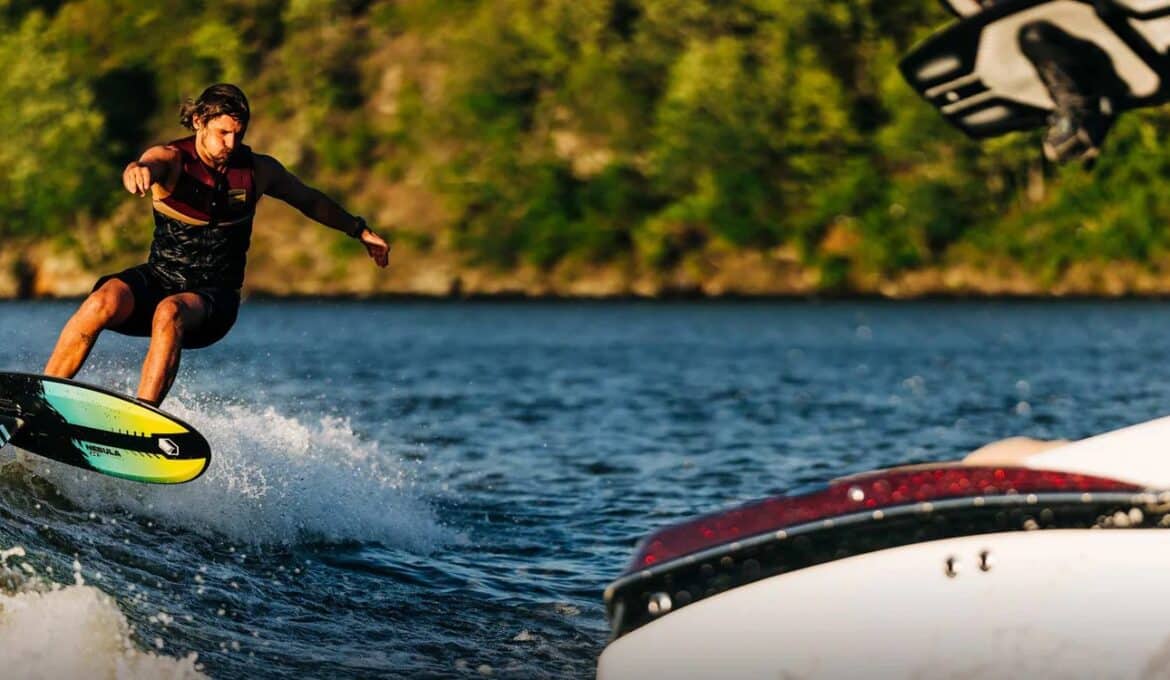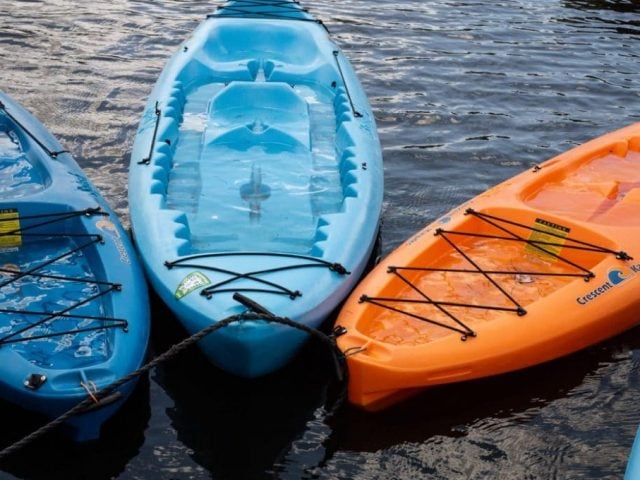Watersports have evolved tremendously over the years, with many new ways of getting out and enjoying time on the water. Wake surfing, wakeboarding, kneeboarding, and now wake foiling are among the most popular watersports activities.
Wake foiling is similar to wakeboarding, the main difference being that the board does not directly contact the water. If you want to try wake foiling, follow along as we break down everything a beginner needs to know, from selecting your board to getting up on the water.
Wake Foil Components

Unlike wakeboarding or wake surfing, a wake foil setup involves several components. Each selection changes the feel of the board, so you’ll want to review them carefully to get the right setup.
Foil Board
The foil board is the core component of a wake foil setup. These boards are usually specific to wake foiling and have built-in spots that accept hardware to secure the other wake foil components.
Beginners should look for larger boards that help with stability. You can choose a smaller board that feels more responsive as you progress and improve. The shape of the board is also another consideration. Concave boards are easier to turn, whereas flat boards are more stable.
Mast
The mast connects the fuselage to the board. It is typically made of alloy or carbon. Alloy is more cost-effective but heavier, while carbon is more expensive but lighter. Additionally, alloy masts are broken down into two sections, which creates extra flex.
The length of the mast is a significant factor in the board’s handling. A good size for beginners is 24”, but you can size up or down as needed. A taller mast will be more responsive but harder to learn on.
Some boards also have multiple mast positions. The rearward-most positions are easiest, so we recommend starting with them.
Front Wing
The front wing influences handling and control. For a beginner, you should consider a wing with a rounded front, like an airplane wing. This will create subtle movements in the water and help with getting up. More experienced riders, however, will prefer a sharper transition, knife-shaped for better response and pumps.
Regarding width, the heavier the rider, the wider the wing should be. This helps achieve the proper lift.
Fuselage
A fuselage secures the wings, front and rear, to the mast. It’s an often overlooked component but still very important. Fuselages are typically available in several different lengths; the shorter lengths aid quick turns, whereas the longer options help provide more pump.
Tail Wing
The tail wing also influences stability. Pay close attention to the direction of the wing tips; some point up, some point down, and some are flat. Wing tips pointed down are better for tracking, while wing tips pointed up help slow responsiveness for a smoother flow and are better suited for beginners.
Carrying Case
Finally, you have the carrying case, which should not need much explanation. However, it’s vitally important you have a case for your foil setup. As there are several different components, a case ensures they all stay together, which is extremely important since losing just one piece can put you out of commission for several weeks. Most cases are also padded to protect all your parts from damage.
Selecting a Foil System
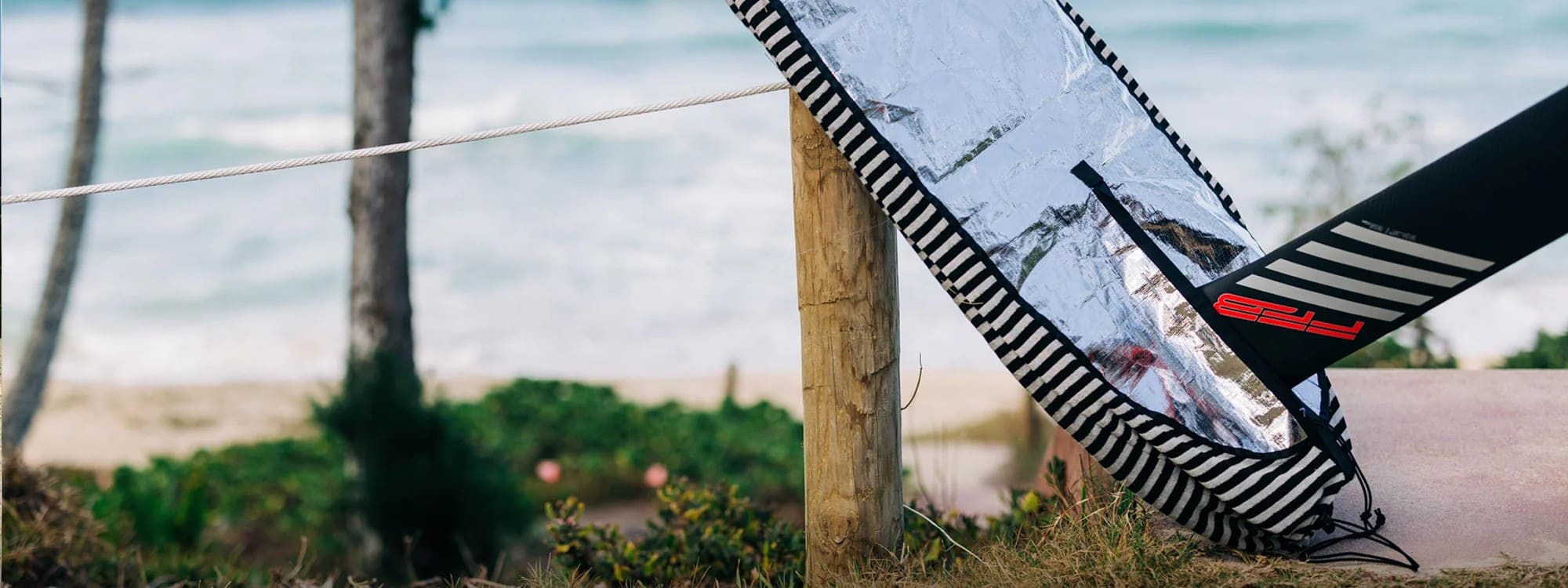
When selecting your first board, it’s important to ensure the different foil kit components are cross-compatible or interchangeable. For example, as you progress through the sport and increase your skills, you might want to choose a taller mast or a different wing. You’ll want to be able to do this without buying an entire new board. Therefore, it’s important that the board you choose allows you to swap different components as needed.
Although you can certainly piece together a custom setup with the exact mast length and wing width, most manufacturers offer bundles with good combos to start with, and that’s what we recommend for first-time riders.
What Type of Boat Do You Need for Wake Foiling?
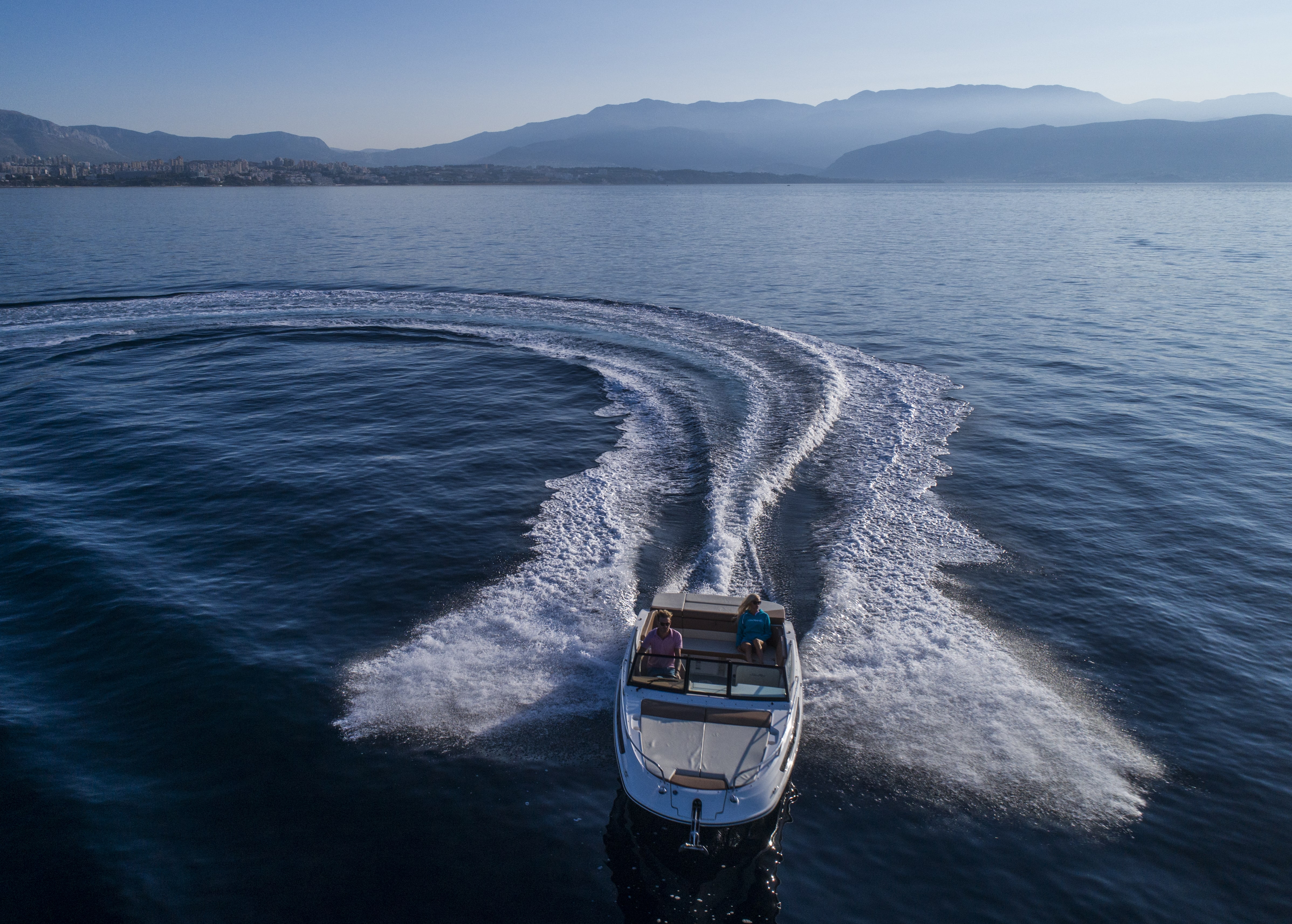
One of the great appeals of wake foiling is that you can use almost any type of boat when starting out. You don’t need a dedicated ski boat capable of high speed to wake foil. It doesn’t matter if you have a fishing boat, pontoon boat, etc.; you can foil behind almost anything with a motor.
Unlike other watersports like water skiing and wakeboarding, you don’t need speed. However, as your skills progress, you might find a faster boat offers more of a challenge.
Can I Use a Ski Rope for Wake Foiling?
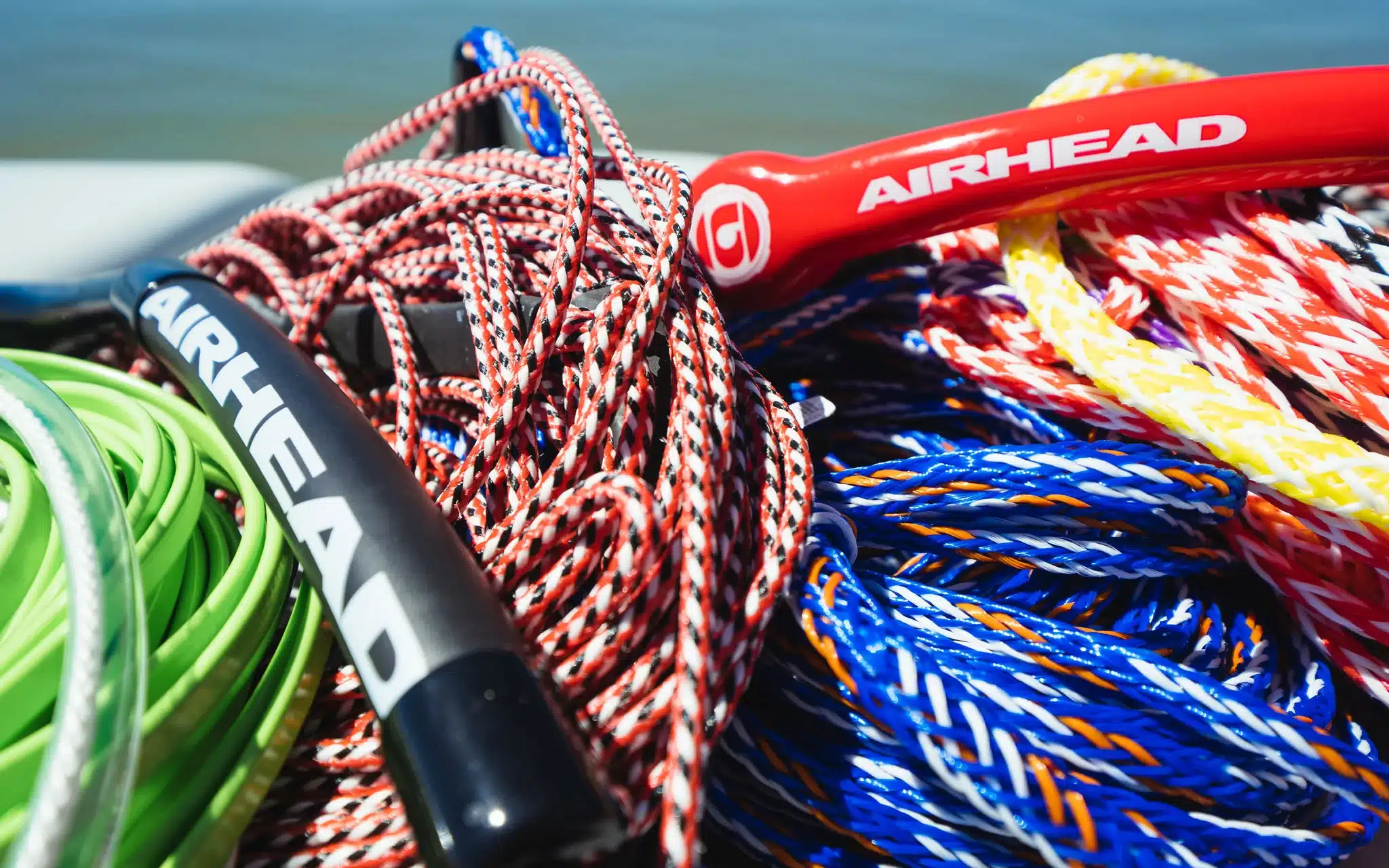
Most beginners getting into wake foiling use a standard 75’ ski rope. The further away from the boat you are, the smoother the ride will be, making it easier to stay up. A longer rope allows you to stay further back as you learn and then remove rope sections to increase difficulty as you progress your skills. Ski rope lengths can be adjusted down, which lets you ride different size wakes.
Learning How to Wake Foil
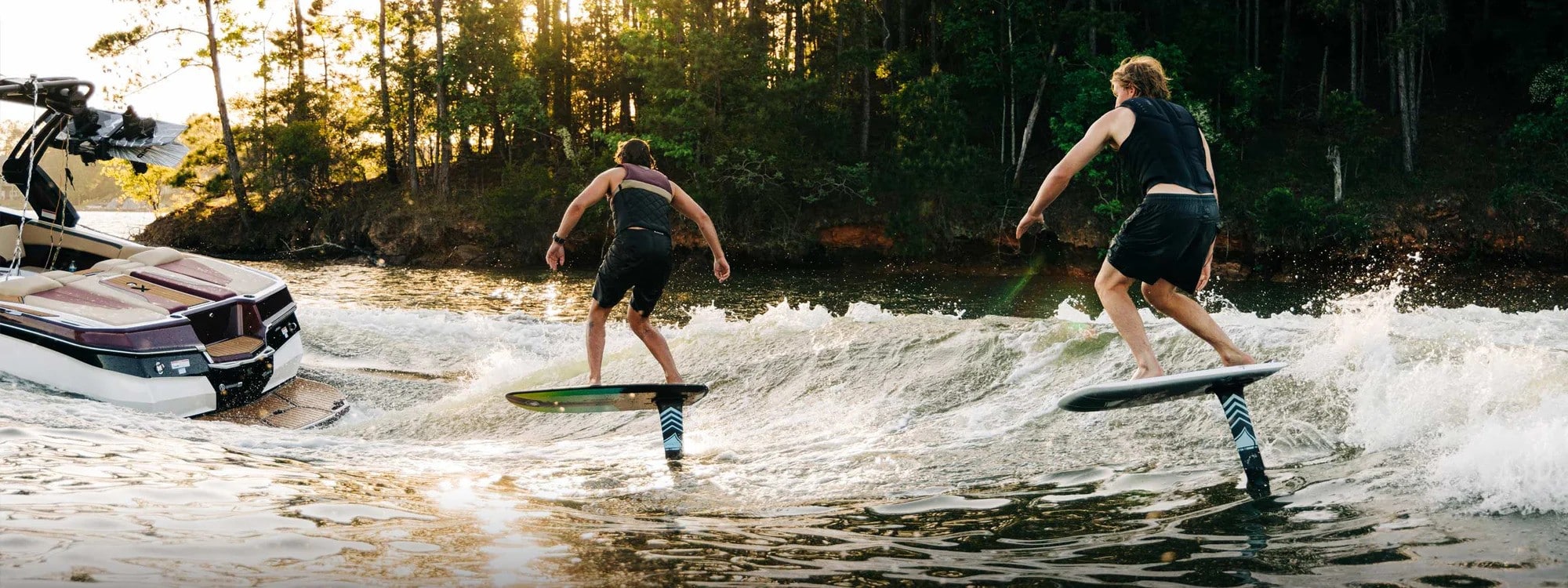
Safety is always the most important aspect while out on the water. Therefore, before you hit the boat, you must have a U.S. Coast Guard-approved life jacket rated for watersports. Need help selecting one? Check out our guide.
Unlike other watersports, the foil board has a mast and wing that hang down, so you’ll need to be extra careful when entering the water and taking off. Most people like to enter the water on their stomach with the board underneath, keeping their feet out of the way of the mast.
Boat Driver Tips
The driver plays an important role in helping the rider get up. In most watersports, the driver aims to get the rider up quickly. However, with wake foiling, the driver will want to ease the rider into the upward position. If the pull is too fast, it’ll create too much lift and cause an unstable ride. The driver must also ensure the rider is on the same side of the wake they wish to ride, as transitioning from one side to the other is very difficult.
Getting Up On the Board
Ensure the board is in line with the rope and have the driver idle the boat forward just enough to create pressure on the board under your feet. You should be in a tucked position with your knees and shoulders aligned. Once the rider is in position, the driver should increase speed to around 10 mph.
When the line tightens, let the boat pull you up into a standing position, placing pressure on your front foot so the board does not ride up. Try to keep half of the mast underwater and the other half above. When starting, you ride out of the wake since the water will be calmer and easier to maneuver.
As you progress and get better, you can try riding in the wake, shortening the rope, getting closer to the boat, or tossing the rope altogether.
As with any watersport, practice makes perfect, so don’t get discouraged if you don’t get it right the first time. We hope you found this guide helpful; let us know what other watersports you enjoy in the comments below.

